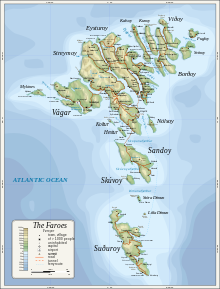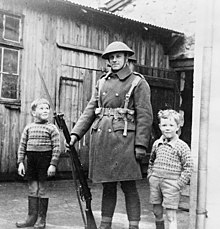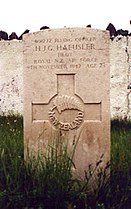
The early details of the history of the Faroe Islands are unclear. It is possible that Brendan, an Irish monk, sailed past the islands during his North Atlantic voyage in the 6th century. He saw an 'Island of Sheep' and a 'Paradise of Birds', which some say could be the Faroes with its dense bird population and sheep. This does suggest however that other sailors had got there before him, to bring the sheep. Norsemen settled the Faroe Islands in the 9th or 10th century. The islands were officially converted to Christianity around the year 1000, and became a part of the Kingdom of Norway in 1035. Norwegian rule on the islands continued until 1380, when the islands became part of the dual Denmark–Norway kingdom, under king Olaf II of Denmark.
The politics of the Faroe Islands, an autonomous country of the Kingdom of Denmark, function within the framework of a parliamentary, representative democratic dependency, whereby the Prime Minister of the Faroe Islands is the head of government, and of a multi-party system. The Faroe Islands are politically associated with the Kingdom of Denmark but have been self-governing since 1948. Executive power is exercised by the government. Legislative power is vested in both the government and the Løgting. The judiciary is independent of the executive and the legislature and the responsibility of Denmark.

The Faroe Islands is served by an internal transport system based on roads, ferries, and helicopters. As of the 1970s, the majority of the population centres of the Faroe Islands have been joined to a single road network, connected by bridges and tunnels.
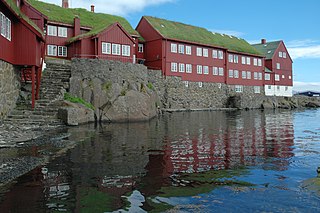
Tórshavn, usually locally referred to as simply Havn, is the capital and largest city of the Faroe Islands. It is located in the southern part on the east coast of Streymoy. To the northwest of the city lies the 347-meter-high (1,138 ft) mountain Húsareyn, and to the southwest, the 350-meter-high (1,150 ft) Kirkjubøreyn. They are separated by the Sandá River. The city itself has a population of 14,065 (2023), and the greater urban area has a population of 23,194, including the suburbs of Hoyvík and Argir.

The Løgting is the unicameral parliament of the Faroe Islands, an autonomous territory within the Danish Realm.
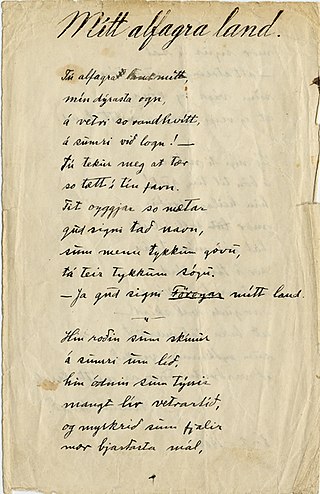
"Tú alfagra land mítt", officially "Mítt alfagra land", is the national anthem of the Faroe Islands. It was written in 1906 by headteacher Símun av Skarði, and the melody was composed in 1907 by violinist Petur Alberg.
This is a timeline of Faroese history comprising important legal and territorial changes and political events in Iceland and its predecessor states. To read about the background to these events, see history of the Faroe Islands.

Vágar Airport is the only airport in the Faroe Islands, and is located 1 NM east of the village of Sørvágur, on the island of Vágar. Due to the Faroe Islands' status as a self-governing territory, the airport is not subject to the rules of the European Union. It is the main operating base for Faroese national airline Atlantic Airways and, for a brief period during 2006, was also the base for the low-cost airline FaroeJet.

The króna is the currency of the Faroe Islands. It is issued by Danmarks Nationalbank, the central bank of Denmark. It is not a separate currency, but is rather a local issue of banknotes denominated in the Danish krone, although Danish-issued coins are still used. Consequently, it does not have an ISO 4217 currency code and instead shares that of the Danish krone, DKK. This means that in the Faroe Islands, credit cards are charged in Danish kroner. The króna is subdivided into 100 oyru(r).
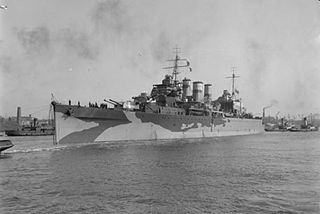
HMS Suffolk, pennant number 55, was a County-class heavy cruiser of the Royal Navy, and part of the Kent subclass. She was built by Portsmouth Dockyard, Portsmouth, UK, with the keel being laid down on 30 September 1924. She was launched on 16 February 1926, and commissioned on 31 May 1928. During the Second World War, Suffolk took part in the Norwegian Campaign in 1940 and then the Battle of the Denmark Strait in 1941, before serving in the Arctic throughout the following year. After a refit that concluded in April 1943, the cruiser served in the Far East until the end of the war. In the immediate post-war period, Suffolk undertook transport duties between the Far East, Australia and the United Kingdom before being placed in reserve in mid-1946. The vessel was sold off and then scrapped in 1948.

Lesbian, gay, bisexual, and transgender (LGBT) rights in the Faroe Islands are relatively similar to that of Denmark. The progress of LGBT rights has been slower, however. While same-sex sexual activity has been legal in the Faroe Islands since the 1930s, same-sex couples never had a right to a registered partnership. In April 2016, the Løgting passed legislation legalizing civil same-sex marriage on the Faroes, recognizing same-sex marriages established in Denmark and abroad and allowing same-sex adoption. This was ratified by the Folketing in April 2017. The law went into effect on 1 July 2017.
The Faroese language conflict is a phase in the history of the Faroe Islands in the first half of the 20th century. It was a political and cultural argument between advocates of Faroese and Danish to serve as the official language of the Faroe Islands.

The Faroe or Faeroe Islands, or simply the Faroes, are an archipelago in the North Atlantic Ocean and an autonomous territory of the Kingdom of Denmark. The official language of the country is Faroese, which is closely related to and partially mutually intelligible with Icelandic.

Skansin is a historic fortress in Tórshavn, the capital of the Faroe Islands.

The Faroese independence movement, or the Faroese national movement, is a political movement which seeks the establishment of the Faroe Islands as a sovereign state outside of Denmark. Reasons for independence include the linguistic and cultural divide between Denmark and the Faroe Islands as well as their lack of proximity to one another; the Faroe Islands are about 990 km (620 mi) from Danish shores.

Jenis Kristian av Rana is a Faroese medical practitioner and politician, serving as leader of the Centre Party since 2001. He served as minister of Foreign Affairs and Culture of the Faroe Islands from 2019 until his party's withdrawal from government in November 2022.

Bárður á Steig Nielsen is a Faroese politician and businessman who serves as leader of the Union Party since 2015 and was prime minister from 2019 to 2022. He is also goalkeeper of the VÍF Vestmanna handball team and a former handball player of the Faroe Islands national team.
The Danish royal trade monopoly, referred to in Faroese as kongligi einahandilin and in Danish as Kongelige Færøske Handel, oversaw all trade between the Faroe Islands and other regions from 1709 to 1856.
Føroya Tele P/f (FT) is the public telecommunications company in the Faroe Islands. It is one of the largest companies in the country with 230 employees and an annual turnover of around 40 million euros. The head office is in Tórshavn Municipality.

